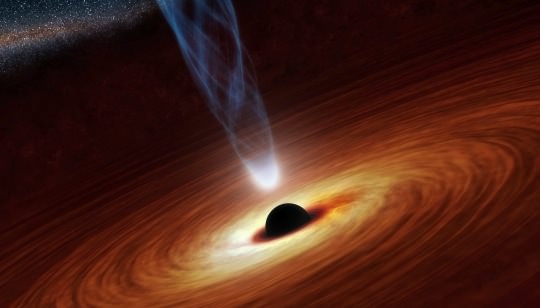The luminous centre of a distant galaxy was covered by an unusual and powerful stream of gas, ejected from a supermassive black hole.
Astronomers observed that the heart of a galaxy called NGC 5548, which is situated around 245 million light-years away from Earth in the constellation Boötes, strangely darkened recently.
Immediately after NASA’s Hubble Space Telescope observed NGC 5548 in June 2013, this international research team discovered unexpected features in the data. They detected a stream of gas flowing rapidly outward from the galaxy’s supermassive black hole, blocking 90 percent of its emitted X-rays.
“The data represented dramatic changes since the last observation with Hubble in 2011,” said Gerard Kriss of the Space Telescope Science Institute (STScI) in Baltimore, Maryland. He said he saw “signatures of much colder gas than was present before, indicating that the wind had cooled down due to a significant decrease in X-ray radiation from the galaxy’s nucleus.”
The discovery was made during an intensive observing campaign that also included data from NASA’s Swift spacecraft, Nuclear Spectroscopic Telescope Array (NuSTAR) and Chandra X-ray Observatory, as well as ESA’s X-ray Multi-Mirror Mission (XMM-Newton) and Integral gamma-ray observatory (INTEGRAL).
Agencies/Canadajournal
 Canada Journal – News of the World Articles and videos to bring you the biggest Canadian news stories from across the country every day
Canada Journal – News of the World Articles and videos to bring you the biggest Canadian news stories from across the country every day



